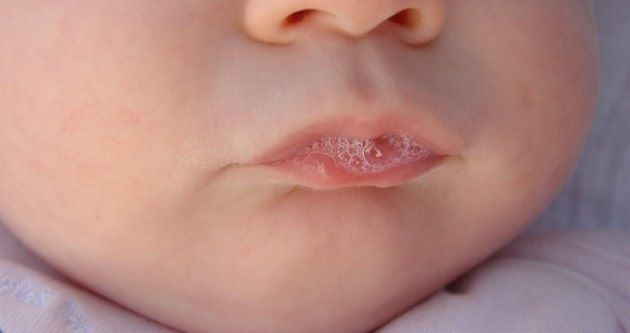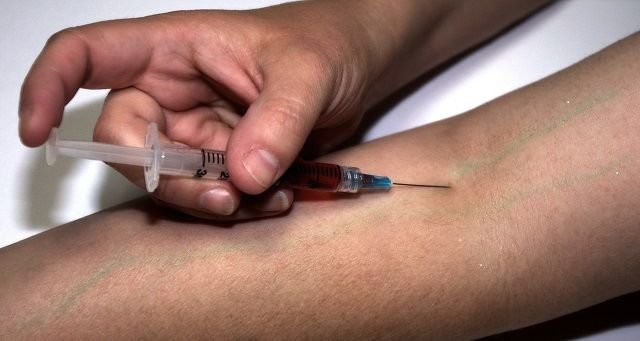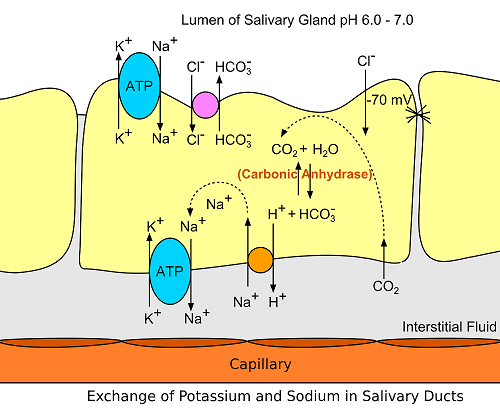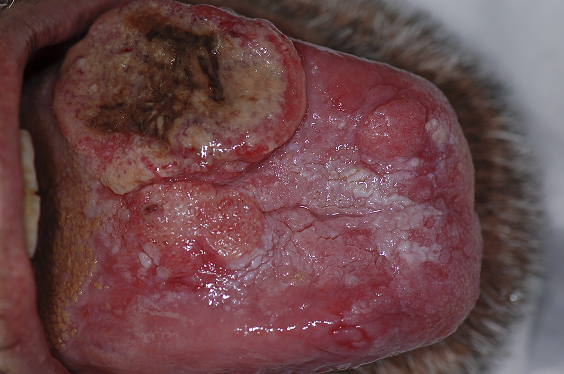Saliva – A Quintessential Diagnostic Tool #1

Hello great people of the Steemit community, thank you for checking through my blog again. In my last few posts, I have been discussing the oral manifestations of systemic diseases. For those of us that have not read it you can check here, here and here.
Today we are going to be discussing another interesting topic, Saliva!
One of the things people dread most when they visit hospital is the fear of the needle. Most times patients undergo a lot of stress when they need to take samples for investigation due to the pain of multiple needle prick as they go from one laboratory to another. This sometimes make some people to avoid going to the hospital or present very late even when they eventually go which makes early detection of diseases difficult with attendant poor prognosis.

However, it is important to note that early detection of disease plays a crucial role in successful therapy. Early diagnosis and management reduces the severity and possible complications of the disease process.
Saliva contains a large number of diagnostic analytes. The aim of this post therefore, is to highlight the applications of saliva in early diagnosis and assessment of various systemic and oral diseases.
Now imagine a world where all you need to do is just to produce your saliva and all your investigation is done! I believe your guess is as good as mine.
The distinctive advantages of saliva over the serum based assays cannot be over emphasized, being cost effective and can be collected non-invasively without any special equipment. Saliva acts as an attractive alternative to serum which can be analysed for diagnostic purposes, since the whole saliva contains both serum derived and locally produced markers which make it apt for diagnosis of various local and systemic diseases.
Saliva is regarded as the mirror of body’s health because it is composed of varieties of analytes that reach the oral cavity through various pathways from systemic sources. About 99.5% of saliva is made up of water and the remaining 0.5% consists of electrolytes, enzymes, mucus, glycoproteins, and antimicrobial compounds like IgA and lysozymes.
How is Saliva Produced ?
The salivary glands composed of major and minor salivary glands and they are made of specialized epithelial cells, and their structure can be divided into two specific regions: the acinar and ductal regions. Fluid production and most of the protein synthesis and secretion takes place in the acinar cells region. Amino acids enter the acinar cells by means of active transport, and after intracellular protein synthesis, the majority of proteins are stored in storage granules that are released in response to secretory stimulation.
The saliva that is produced is initially isotonic in nature and is derived from the local vasculature. However, modification of the primary salivary secretion occur by active absorption of most of the Na+ and Cl- ions produced from the primary saliva and secretion of small amounts of K+ and HCO3- and some proteins by the Ductal cells. Thus, the final salivary secretion as it enters the oral cavity is hypotonic.
About 500-1500ml of saliva is normally produced per day by healthy adult subjects. Saliva can be collected with or without stimulation. In health individuals, normal values for stimulated and unstimulated saliva are 1.0-3.0ml/min and 0.3ml/min respectively.

Properties/Uses of Saliva
The general uses and functions of saliva are:
- Lubrication
- Antimicrobial action
- Maintaining mucosa integrity
- Cleansing
- Buffer capacity and remineralization
- Preparing food for swallowing
- Digestion
- Taste perception
- Phonation
Compounds Expressed In Saliva
Inorganic, organic non- protein, protein/polypeptide, hormones and lipid molecules are various compounds found in saliva
Inorganic compounds
Whole saliva contains mainly water, strong and weak ions (Na+, K+, Mg2+, Ca2+, Cl−, HCO3−,HPO⅔−) which can generate buffer capacity. The concentrations of these ions in saliva may be modified by several factors. Furthermore, the composition of unstimulated saliva is different from stimulated saliva (which is more similar in composition to plasma).
Organic non-protein compounds and Lipids
Small amounts of organic non-protein compounds can be detected in saliva. The organic compounds detected in saliva are Uric acid, bilirubin, creatinine, glucose, amino acids, lipids like cholesterol and mono/diglycerides.
Proteins/polypeptide compounds
The protein and polypeptide compounds derived from salivary gland production obtained by classical protein analysis methods are amylase (most abundant), PRPs secretory IgA (s-IgA) and carbonic anhydrase. Other proteins derived from plasma leakage include albumin, transferrin, IgG, Lactoferin, Lysozyme and Hystatin.
The salivary immunoglobulins are mainly s-IgA (>85%) and are produced directly by the B lymphocytes present near the salivary glands. s-IgA is secreted in the interstitial fluid, taken up by the acinar and ductal cells of the salivary glands and subsequently secreted into the saliva.
Hormones
The commonly measured hormones in plasma are steroids, non-steroids, peptide and protein hormones. However these hormones can also be detected in the oral fluid. Perhaps the most interesting application of saliva is the detection of steroid hormones in salivary hormonal studies.
The most commonly assayed biomarkers in saliva are cortisol, testosterone, dehydroepiandrosterone (DHEA), 17-hydroxyprogesterone, progesterone and aldosterone.
A widely accepted alternative to the determination of cortisol level in plasma or serum is by measurement of salivary cortisol level, because venipuncture for blood collection can lead to an iatrogenic increase of plasma glucocorticoid levels since the adrenal cortex is responsive to stress which will invariably alter the result.
Other protein hormones in saliva which are also detected are prolactin, insulin-like growth factor I (IGF-I) and melatonin.
Advantages of using saliva as a diagnostic tool
- Early detection of pathologic conditions can be achieved, as late presentation offers poor prognosis.
- Saliva can be collected noninvasively
- Saliva has a minimal chance of nonspecific interference
- Saliva is simple and has consistent composition therefore more objective reflection of physiological status can be obtained than serum.
- Salivary analytes are stable and cost-effective for storage
- Collection is pain, anxiety, and risk of infection free, this is unlike collection of blood or other tissues.
- Obtaining multiple follow-up samples is easy
- Point of care technologies available, so some biomarker identification needs no pre-processing
SALIVA AS A DIANOSTIC TOOL
Saliva can be applied as a diagnostic tool for both local and systemic diseases. I will start by highlighting the various ways by which saliva can be used to diagnose of diseases affecting the oral cavity. In my next post I will be discussing the application of saliva in diagnosing various systemic
Local use of saliva as a diagnostic tool
Periodontal disease
There are more than 800 metabolites in saliva. A study found 8- potential indicators of periodontal inflammation in saliva which includes combination of cadaverine, 5-oxoproline, and histidine which yielded satisfactory accuracy for diagnosis of periodontitis. PGE2 is a key inflammatory mediator in periodontal diseases, also Polyamine, arginine, proline, butyric acid, lysine were distinctive metabolic signatures of dental plaque in Periodontitis.
Cadaverine is a robust biomarker for the severity of periodontal inflammation regardless of debridement and it could be used for rapid periodontitis screening.
Dental caries
There is a reasonably evidence to state that salivary buffering capacity protects the tooth from dental caries.Since saliva provides a general protective effect, clinically significant decrease in salivary functions can be considered as an etiologic factor that contributes to the development of dental caries.In severe cases the unstimulated saliva results will also be low, giving a clear indication of increased levels of dental caries risk. Recurrence of Dental caries can occur If only conventional dental treatment is done in these subjects without treating the defect in the salivary parameters.
Saliva based caries activity tests include; Lactobaccilus colony count test, Snyder test, Reductase test, Buffer capacity test, Fosdick calcium dissolution test, S.Mutans adherence method and S.Mutans dip-slide test.
Oral cancer
Tumour cells inhabit or produce biochemical substances referred to as tumour markers. These can be normal endogenous products that are produced at a greater rate in cancer cells or the products of newly switched on genes that remain quiescent in the normal cells.
The various tumour markers in oral cancer are protein markers like M2BP, MRP14, CD 59, prifilin 1 and catalase , Genomic markers like Dual specificity phosphatase 1, H3 histone family 3A, Interleukin-1β, Interleukin-8, Ornithine decarboxylase antizyme-1, S-100P and Spermidine/spermine N1-acetyl transferase and salivary microbiota.
Advances like proteomics which is used to detect a panel of proteins, transcriptomics for DNA and RNA and genomics for determination of genetic damage are helpful for characterization of disease states.With point of care diagnostics being the requirement of the day salivary analysis could become a routine procedure for cancer detection.

Halitosis
One of the most frequent complaints of dental patient’s concerns offensive breath. Bad breath may arise due to various local and systemic disorders like the teeth, gums, soft structures of the oral cavity, nasopharyngeal region, digestive tract, bronchopulmonary area and genital-urinary region. It is important to have the ability of detecting abnormal shifts, both acid and alkaline, from the normal saliva pH of 6.9.
An abnormal shift to the acid side may indicate the presence or at least the susceptibility to dental decay and the more alkaline conditions point to calculus formation and the resultant likelihood of periodontal diseases associated there with. Xerostomia is another cause of halitosis. When our mouth is dry, saliva production decreases, leaving the mouth’s natural ability to clean itself impaired.
Let me stop here today. In my next post, I will be discussing the various ways by which saliva can be used to diagnose various systemic diseases.
In conclusion, it is safe to say that saliva can act as an attractive alternative to serum which can be analysed for diagnostic purposes, since the whole saliva contains both serum derived and locally produced markers which make it apt for diagnosis of various local and systemic diseases.
Thanks for reading.
This is a test comment, notify @kryzsec on discord if there are any errors please.
Being A SteemStem Member
Please always add a graphic content warning in titles where pictures are of a graphic kind. Thank you.
Thanks for reading and for your suggestion. I will surely take note of that .
good post!! I'm dentistry student and this information is really important to promote the good oral habits to people!! my best wishes to you.. :)